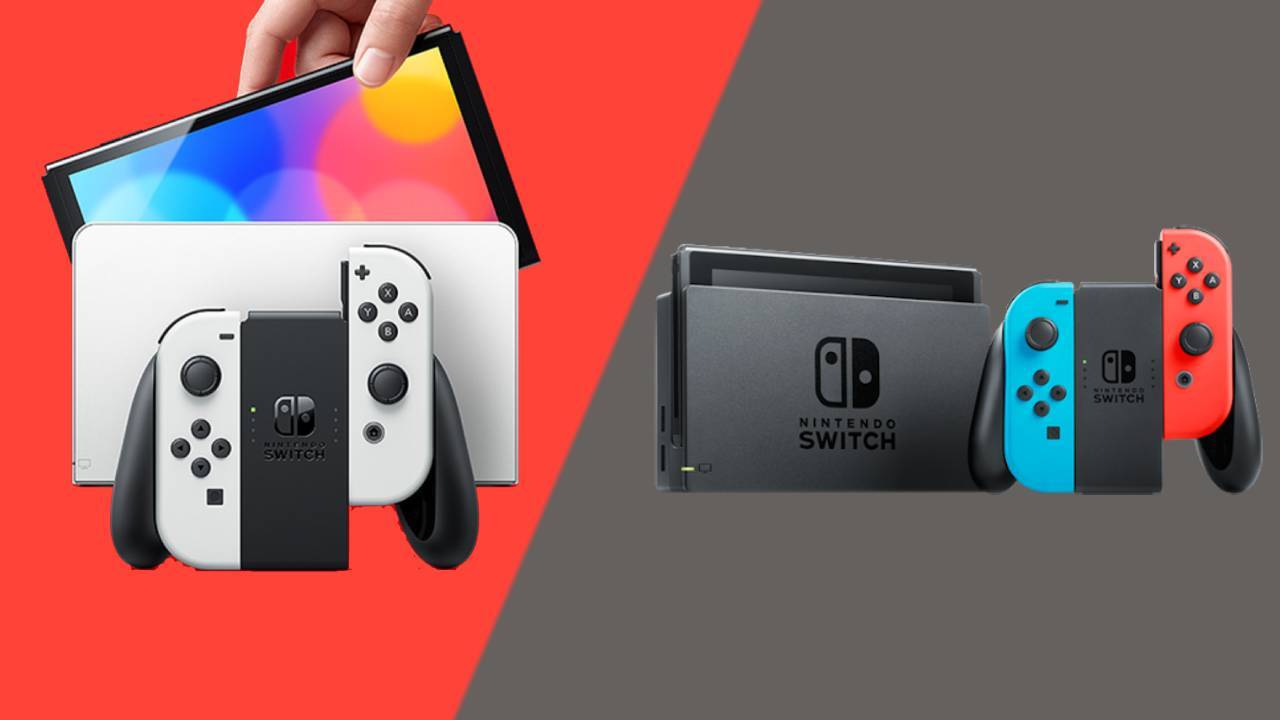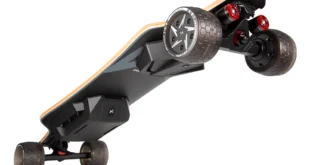The Nintendo Switch console is one of the most popular gaming devices on the market, combining a portable design with a fantastic games library. But there are different editions available, including the original and the premium Switch OLED.
To help you figure out which portable device you should buy, we’ve decided to tally up all the key differences between the original Nintendo Switch and the upgraded Nintendo Switch OLED consoles.
Since we have reviewed both devices in full, we’re going to be running through the price, design, screen and performance so you can decide which device suits you best.
Without further ado, here is what you need to know about the Nintendo Switch and the Nintendo Switch OLED.
Price
The standard Nintendo Switch console is the cheaper option of the two. When it launched it cost £279.99/$299.99. Nowadays, it can be found in multiple bundle variations with different games and accessories for varying costs. By itself, it’s currently just below £260 on Amazon.
The Nintendo Switch OLED is more expensive thanks to the OLED panel, with a launch price of £310/$350. It can also be purchased in bundles directly from Nintendo or from third-party retailers.
It’s worth noting that both models can be found at more affordable prices than when they launched, however, this is usually in a bundle format, as the standalone consoles rarely seem to get any significant discounts.
Screen
The Nintendo Switch console boasts a 6.2-inch display with a 1280×720 resolution and some pretty thick bezels. We noted that while it could do with a higher resolution, it still offers an immersive experience when playing games like Super Mario Odyssey and Dragon Quest Builders in handheld mode.
Since the original portable uses an LCD panel, the colour accuracy and contrast are not spectacular. That’s not to say that it makes games less enjoyable to play, but there can be a lack of depth and detail in the picture overall, especially in games that already lack a graphical edge, like Pokémon Legends: Arceus.
The touchscreen itself is very responsive when used with your fingers and the screen isn’t too reflective, allowing you to game outside in sunnier environments without any issues.
Looking at the Switch OLED, the obvious upgrade is the OLED panel, although it did stick with the same 720p resolution in handheld mode. We thought that it provided far better contrast and colour accuracy, resulting in a picture that is far superior to the original console.
White colours appear purer and do not have the same reddish tint as its predecessor, with games like Breath of the Wild having a lot more depth and detail. We also singled out Metroid Dread, as during our review we found that the 3D cutscenes had improved vibrancy and felt more cinematic overall.
The Switch OLED boosted the display from 6.2 inches to 7 inches, and we thought that the added width made a huge difference, more so for anyone that’s moving over from the dinky Nintendo Switch Lite.
It is important to note that the Switch OLED is at its best in handheld mode, as the resolution has not been improved when docked to a TV or monitor – there’s no 4K performance here.
Design
The Nintendo Switch has a kickstand on the back of the device which allows it to be propped up. Unfortunately, the kickstand felt surprisingly weak and flimsy, with our reviewer claiming that it would occasionally fall over during particularly excitable gameplay or if it was not placed on a steady surface.
It houses a USB-C charging port on the bottom of the device, which means that it cannot be charged in tabletop mode, only when it is being held or docked in its station.
The Switch comes with dual Joy-Con controllers, which slide into the rails on the side of the Switch during handheld mode, but can be removed and used independently of the device. Switching the controllers out can be a little fiddly, but as long as you hear the mechanical click they are properly in place.
Finally, the Switch comes with a dock that can be connected to an external monitor or TV so you can game on the big screen. We thought that the matte black plastic dock looked fairly elegant, and its small size makes it a lot easier to accommodate than larger consoles like the PS5 or Xbox Series X.
The dock has a USB-C power adaptor port, an HDMI port as well as three USB 3 ports, with two on the side and one at the back. Multiple users have complained that sliding the Switch into the dock can result in the screen scratching; we found that this can be avoided by being careful, but it’s something to keep in mind if you, or any children, are particularly clumsy.
Turning to the Nintendo Switch OLED, there are a few design differences, but overall the devices look and function in a very similar manner. Most notably, the Switch OLED comes with an improved kickstand that spans the entire rear of the device for a much sturdier hold. Unlike the original Switch, this stand can also be configured at multiple viewing angles for added versatility.
We thought that the OLED model felt far nicer to use, with a firmer build that is more resistant to fingerprint smudges. The speakers have been improved to provide louder and more detailed sound, with both devices supporting Bluetooth audio.
The dock also underwent a redesign and now comes with a LAN port that allows for a wired internet connection without the need for an adaptor. The latest design also enables cable routing, which is ideal for those who want a clean setup.
Specs and Performance
Both the Nintendo Switch and the Nintendo Switch OLED come with the same Nvidia Tegra processor, with the OLED model opting out of a performance upgrade. Generally, we found that both consoles performed well in handheld mode apart from the occasional frame-rate hiccup, with most games loading up in a serviceable amount of time.
However, using the Switch in docked mode is a bit of a different story. During our Nintendo Switch OLED review, hooking up the console to a 55-inch OLED TV resulted in a picture that lacked the high level of detail we’re accustomed to.
These issues will be more obvious if you are used to gaming with a PS5 or Xbox Series X in 4K. But overall, it is still enjoyable to play games on the big screen, they just don’t look as sharp as some people may like.
You don’t need to worry about the game library though, as the Switch and Switch OLED are compatible with the exact same titles, including big hitters such as Breath of the Wild and Pokemon.
Battery
Nintendo claims that the battery for the vanilla Switch is between 4.5 and 9 hours, depending on the game, brightness level and if the console is connected to Wi-Fi or not.
Generally, we found that the battery life heavily depends on what game you are actually playing. This does limit the Switch’s capabilities, so we recommend that you purchase a separate USB-C battery pack if you’re planning on gaming over a long flight or train journey.
It’s worth noting that the standard Switch you can buy today actually has a superior battery life than the original model that launched back in 2017, as Nintendo quietly launched an upgraded version without altering the name.
The Switch OLED boasts the same battery life as the standard Switch following the upgrade, with Nintendo claiming it can run between four to nine hours. Again, this is very dependent on the game you are playing, as well as the brightness and Wi-Fi.
Playing Breath of the Wild for two hours drained the battery by 63%, and we could play Metroid Dread for five hours before the device needed to be charged.
Verdict
Both the Switch and Switch OLED are fantastic devices and since they share the same games library, you won’t be missing out on any exclusive releases by opting for one console over the other.
Overall, if you prefer to play in handheld mode then the Switch OLED will be the console for you. The improved kickstand and OLED panel make this an ideal portable device, and better suited to gaming on the go than its predecessor.
However, if you don’t have a massive preference for screen quality during handheld mode or prefer to play while the console is docked, the vanilla Nintendo Switch is also a great option. It’s a reliable device and is more affordable than its OLED sibling, making this the better choice for those on a budget.
If you are a writer then you can write for us
 Lifeyet News Lifeyet News
Lifeyet News Lifeyet News





